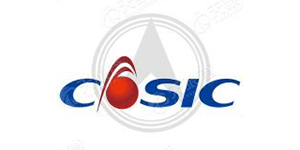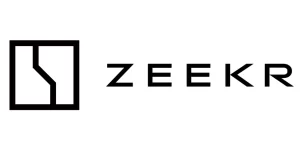Buildings and environments in cities not only constitute the material space for people's production and life, but also serve as important carriers for carrying people's spirit and mind. During the decades of booming development of China's construction industry, the industry and academia have accumulated rich experience in design and planning to serve urban development and economic production. However, how to study the influence of the "concrete" urban environment on the "abstract" residents' psychology is a relatively weak research link in the field of architecture. In the current era of connotative transformation and development of the architectural industry, it is particularly important to consider the interaction between the built environment and human beings. The intervention of cognitive neuroscience and brain science experimental methods provides a reasonable solution for the in-depth study of this issue.
Led by Prof. Xu Leiqing, the chief expert of the key research and development program, this research adopts the experimental technique of near-infrared scanning (Hengdian Cortivision near-infrared instrument), which is one of the cutting-edge research methods in the field of cognitive neuroscience, to study the mechanism and pathway of the third space in the city that affects and enhances the mental health of the residents, and the article has been published in the top journal in the field of architecture, "Frontiers of Architectural Research, a top journal in the field of architecture, which is the latest research result in the cross-disciplinary research direction of cognitive neuroscience and architecture.
Li Kahua
April 19, 2025



Introduction
Urban environments have a significant impact on mental health and well-being, especially green spaces. However, the healing potential of urban "third spaces" remains under-appreciated compared to the well-studied "natural" environment. Third space" refers to the public spaces where people gather outside of their homes (first space) and workplaces (second space) to enhance well-being by promoting social interaction and community participation. Using fNIRS brain imaging, Empatica E4 wristband physiological data collection, questionnaires, and interviews with 40 young adults in Shanghai, China, we found that the third space demonstrated neurological, psychological, and physiological healing comparable to that of natural environments, albeit through different underlying mechanisms. The third space promotes psychological well-being primarily through social engagement and environmental design that fosters "feelings of pleasure," while the natural space promotes "feelings of gratitude" through biophilic connection. These findings emphasize the importance of the third space in mental health support for young adults and highlight the need for social infrastructure interventions. Optimizing third spaces can create healthier, less stressful and more emotionally positive urban environments. This paper was published in Frontier of Architectural Research 2025, this is the short version.
Xu Leiqing a Meng Dancheng ab*, Shin Bin Tan b, Li Jiahua c, Zhang Xiaolin c
a College of Architecture and Urban Planning, Tongji University
Accepted by A&HCI / EI / CSCD / Scopus / DOAJ / CSTPCD
summary
Background
Projections show that by 2050, two thirds of the global population will live in cities, with the proportion of young people rising. The relationship between rapid urbanization and mental health problems has attracted widespread attention for decades. In response to these challenges, researchers and policymakers have proposed applying a public health perspective to urban planning, such as the WHO Healthy Cities Initiative and the 15-minute community concept.The COVID-19 pandemic further highlights the importance of these initiatives.
As the healing effects of the natural environment on health have been proven, nature-based solutions are receiving increasing attention. At the same time, a new trend of "restorative urbanism" is emerging, in which the "third space" serves as the key urban built environment, emphasizing urban design that transcends the natural environment. However, much of the restorative potential of third space has not yet been fully recognized.
Much of the traditional research has used psychological and social science methods to assess the impact of the built environment on mental health. Neuroscientific tools can meaningfully complement these assessments by providing more objective measures of individual emotional responses. This study expands the understanding of the potential healing benefits of third spaces through innovative community case studies, with a particular focus on neuroscientific mechanisms of influence.
Key knowledge gaps
There is a lack of research in the built environment and mental health research that explores the healing potential of third spaces from a neurological perspective. The present study compares participants' neural responses to typical third spaces, natural environments, and high-traffic locations to examine the psychological and neurological benefits of third spaces compared to two other more commonly studied environments.
We conducted a laboratory study of young Chinese residents living near a university in Shanghai, China, using functional near-infrared spectroscopy (f(NIRS), combined with Empatica E4 wristbands, questionnaires, and interviews, to examine how different types of public spaces affect neural responses in frontal and occipital brain regions, as well as physiological responses such as heart rate variability. We anticipate that third spaces will positively influence physiological, psychological and neural responses, similar to effects observed in natural environments.
Research Methodology
This experiment utilizes smart glasses to simulate a virtual big screen to provide participants with an immersive movie viewing experience, while at the same time, through thefNeurological, psychological and physiological responses were collected by NIRS measurements and wearable devices. The three experimental conditions were: a natural environment expected to have a healing effect, a busy traffic intersection expected to induce stress, and the "third space" that is the central focus of this study. By comparing participants' responses to these three environments, we aim to explain the benefits of the Third Space for young adults.



stimulus material
The stimulus material consisted of three environmental conditions in the university community: "natural environment", "third space" and "traffic intersection". Each type of space contained three videos taken from different angles and presented through Huawei Vision Glass smart glasses.
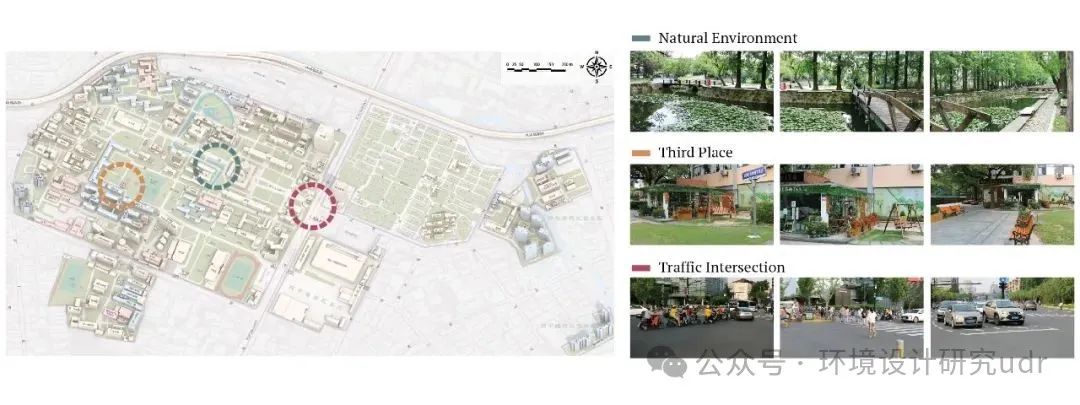


participants
Forty healthy adult participants between the ages of 18 and 35 (mean age 25.20 years), including university students, faculty and staff, and neighborhood residents, were recruited through WeChat advertisements and physical posters. All participants were physically and mentally healthy, had normal vision and hearing, and had no history of heart disease, mental illness, brain injury, or chronic illness. The study protocol was approved by the Ethics Committee of Tongji University, and all experiments were conducted in accordance with the Declaration of Helsinki.
experimental procedure
The study focused on the prefrontal and occipital regions of the cerebral cortex. The prefrontal cortex plays an important role in emotion production and regulation, and the occipital lobe plays a key role in visual processing. The experiment was conducted in a controlled environment, with the test room equipped with a green screen background and low light conditions to prevent light interference.fNIRS measurements. Environmental parameters including temperature, humidity, lighting and sound levels were standardized to ensure that the visual experience was limited to the virtual display of the smart glasses. Participants wore wirelessfNIRS system, wearing an Empatica E4 wristband on the left hand, and viewing the video content through Huawei Vision Glass smart glasses. At the end of the experiment, participants completed a psychological questionnaire followed by a 30-minute semi-structured interview.
Experimental design
Using a between-group design, three types of stimuli were presented randomly. An experimental instruction page was presented during the initial phase, followed by a 180-second preexperimental rest period. A baseline period was provided between each experimental area group in which participants focused on the gaze cross displayed on the screen. The entire procedure was repeated three times for a total of 945 seconds.
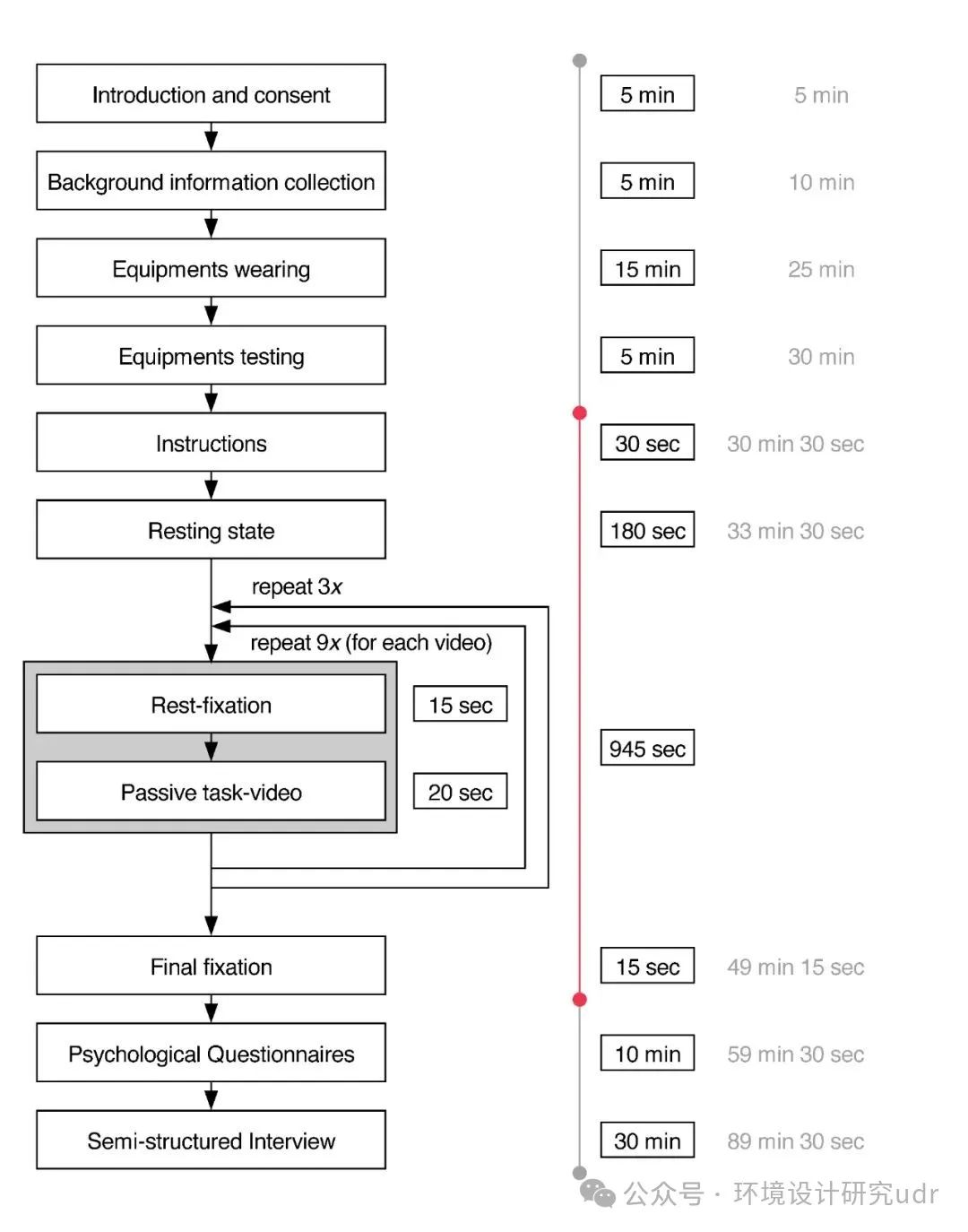


Psychological data
Psychometrics include:
-
"Tension" and "calmness" subscales of the Profile of Mood States (POMS) -
The Positive and Negative Affect Scale (PANAS), revised for the Chinese context, includes nine categories of positive and nine categories of negative affect.
Scoring was done on a 5-point Likert scale. The questionnaire was followed by a semi-structured interview focusing on the participants' emotional experiences and their causes.
Physiological data
Internal arousal status was quantified by measuring electrodermal activity (EDA) and stress levels were assessed by heart rate variability (HRV). The standard deviation of normal-to-normal intervals (SDNN) and the root mean square of successive differences (RMSSD) were calculated from heart rate data. Skin response (SCR) and skin level (SCL) were derived from skin electrical activity measurements.
Neurological data
Optic pole arrays covering the prefrontal cortex and occipital lobe were designed and data were processed, filtered, analyzed and visualized using a MATLAB-based toolbox. A generalized linear model (GLM) approach that includes hemodynamic response functions was used through the
Signal changes were estimated for neural activity. beta values represent the response to environmental stimulus
Amplitude of signal change.
Results
mental reaction
"The "Traffic Intersection" condition triggered the highest tension levels on all measured dimensions. Both "Natural Environment" and "Third Space" had significant positive effects on positive emotions and reduced negative emotions. It is worth noting that "Third Space" triggered feelings of "Enthusiasm" and "Vitality" to a much greater extent than "Natural Environment", while "Third Space" triggered feelings of "Enthusiasm" and "Vitality" to a much greater extent than "Natural Environment". It is noteworthy that "third space" evokes feelings of "enthusiasm" and "vigor" to a much greater extent than "natural environment", which mainly evokes feelings of gratitude. On the contrary, the "traffic intersection" condition increased negative emotions, especially "nervousness" significantly.
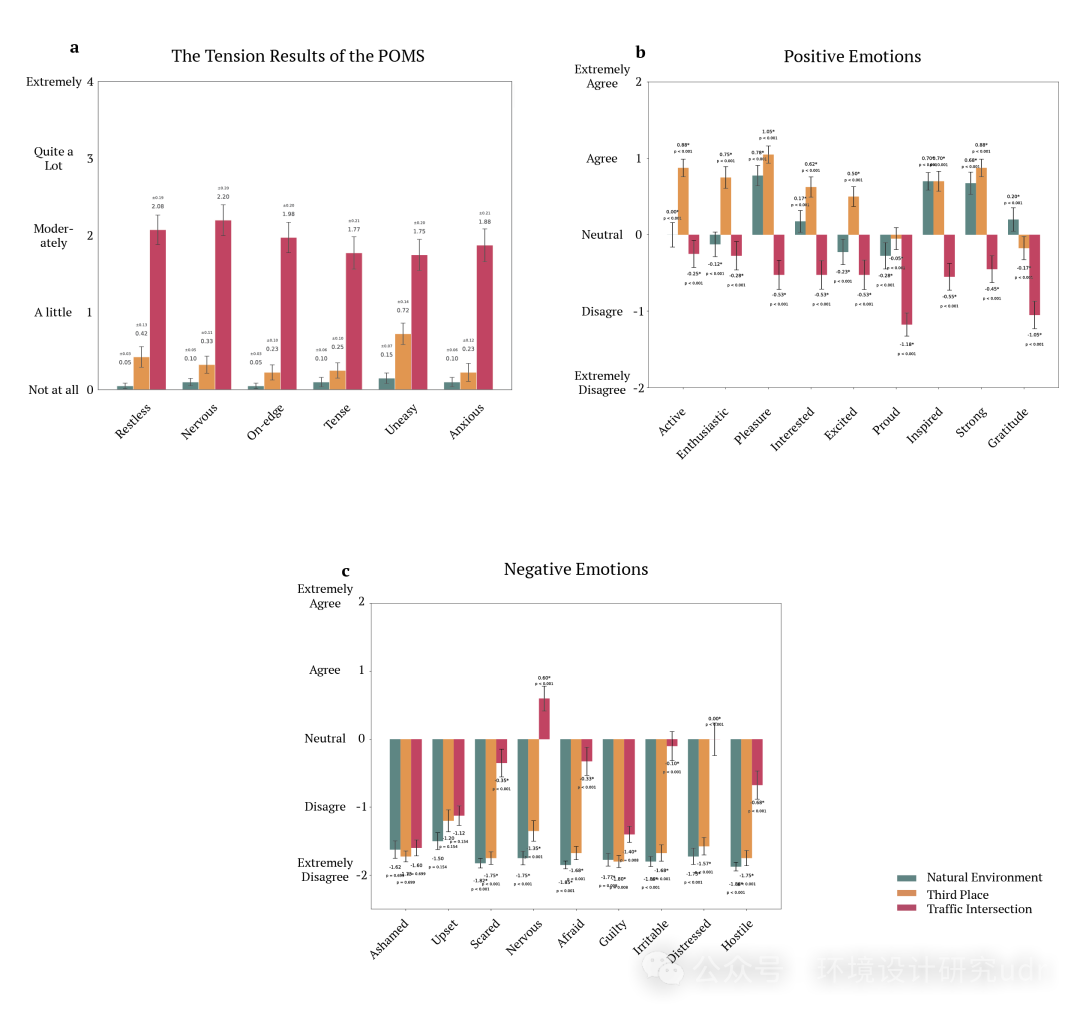


physiological response
Although the mean values of HRV metrics did not differ significantly between conditions, the number of outliers was significantly higher in the "traffic intersection" condition, suggesting that this type of urban environment may have a more substantial impact on an individual's stress response. Analysis of the peak amplitude of the skin cell response (SCR) showed that the "traffic intersection" condition triggered a stronger physiological response, characterized by elevated SCR levels and greater physiological variability among participants.
brain development
The right superior occipital gyrus in three conditions of the
The signals showed significant differences at the margins. Comparative analysis revealed:
-
"Natural environment" vs. "third space": wedge-leaf regions show marginal differences -
"Natural environment" vs. "traffic intersection": right superior occipital gyrus and left superior frontal gyrus show marginal differences -
"Third space" vs. "traffic intersection": cuneate lobes show marginal differences and significant differences in the right superior occipital gyrus
Correlation analyses of brain activity with psychological data showed that beta values in channels 24 (cuneus) and 25 (right superior occipital gyrus) were significantly correlated with emotion, suggesting that basic and primary visual processing may contribute to emotional experience. Specifically, activation of basic visual processing was associated with "pleasure," activation of primary visual processing was positively associated with "gratitude," and activation of "fear" and "dread" were positively associated with "gratitude," and activation of primary visual processing was positively associated with "gratitude," and activation of primary visual processing was positively associated with "dread" and "dread. "fear.



The mean beta analysis showed that "traffic intersection" elicited high negative activation in the left prefrontal cortex, indicating negative emotions, while "natural environment" and "third space" showed positive activation, indicating positive emotions. activation, indicating positive emotions. Occipital cortex showed less activation, reflecting its functional role in basic visual processing, whereas prefrontal cortex showed greater activation during higher-order cognitive processes.
talk over
urban pressure
The results indicate that "traffic intersections" elicit significantly higher negative emotions and stress. Negative activation in the left prefrontal cortex suggests that this environment is associated with mechanisms related to stress regulation and the reduction of negative emotions. Related research supports these findings, suggesting that urban noise pollution increases stress and may lead to mental health problems. In contrast, "natural environments" and "third spaces" have a healing effect on emotion regulation.
Importance of the third space
The "third dimension" and the "natural environment" showed similar healing effects. The right superior occipital gyrus showed higher activity during viewing of the "natural environment" and the "third space" than during viewing of the "traffic intersection". This is consistent with previous studies showing that emotional potency, arousal, and attention independently contribute to increased activity within primary visual cortex.
Some of the reasons why the "natural environment" and the "third space" have similar healing effects include:
-
Both environments promote aesthetic appreciation of beauty and positive emotions -
Place attachment contributes to personal well-being and psychological recovery -
Both environments provide opportunities to escape familiar surroundings, enrich social interactions and foster a sense of community
Comparable healing effects through different mechanisms
The third space demonstrated healing effects comparable to those of the natural environment, but through different mechanisms. Specific patterns of correlation were found between emotional states and visual processing areas: in the natural environment and the third space, "pleasure" was positively correlated with cuneate activation, and "gratitude" was positively correlated with activation of the right superior occipital gyrus; whereas in the "traffic In "traffic intersection", fear-related emotions were negatively correlated with superior occipital gyrus activation.
Research has shown that natural environments enhance well-being through responses related to biophilia, evoking a sense of "gratitude" and connection to nature, while third spaces promote well-being through opportunities for social interaction and well-designed environmental features, particularly through the integration of social possibilities with aesthetically pleasing design elements to achieve their healing effects.
Summary
The results of the study show that the third space demonstrates comparable healing effects to the natural environment, albeit through different underlying mechanisms. Neurological evidence, combined with psychological assessment, establishes that "third spaces" and "natural environments" are effective in reducing fear and stress and promoting positive emotions.
Implications for urban design include:
-
The third space promotes mental health through the emotional pathway, fostering "pleasure" primarily through social interaction and environmental design. -
Links between visual processing areas and emotional responses provide a neuroscientific basis for design practice -
Well-designed environmental elements of the third space are effective in relieving psychological stress
Implementation challenges include ensuring that the physical design is inclusive, maintaining economic sustainability, promoting social equity, and gaining institutional support. Future research will benefit from interdisciplinary collaboration between public health experts, community planners, and urban designers.
Acknowledgments: The following funds are gratefully acknowledged for their support - National Scholarship Council Grants (No. 202306260263); National Key Research and Development Program of China (No. 2024YFF0618400); Joint Research Platform for Inclusive Urban Planning and Construction of Tang Zhongying Foundation, Tongji University (No. 01001650051022009); and thanks to all those who have cared for, participated in, and provided help!
Xu, L., Meng, D., Tan, S. B., Li, J. & Zhang, X. Neurological benefits of third places for young adults in healthy urban environments. Frontiers of Architectural Research (2025) doi:10.1016/j.foar.2025.01.008.



The mobile NIR acquisition system is designed for different research scenarios and is scalable, allowing users to connect one, two or even four beams of their choice, each containing 8 high quality detectors and 12 NIR emitters.
The Spectrum C23 utilizes simultaneous sampling technology to ensure high data quality and accuracy with a device sampling rate of up to 250Hz, Wifi connectivity, TTL input, SD card recording, and manual event marking.The Spectrum provides accurate monitoring of changes in cerebral hemodynamics for a wide range of research areas including cognitive and brain function, pediatric neurodevelopment, sports, mental training, ultrasound, extreme environment VR integration, modal applications, and more. scanning, extreme environment VR integration, multimodal applications, and more.
The Spectrum C23 features a customized EasyCap optic cap and provides a secure strap for mobile use, distributing the weight evenly over the body and minimizing pressure on the head. Whether in the lab or in the field, the Spectrum C23 combines ease of use, comfort and data validity.
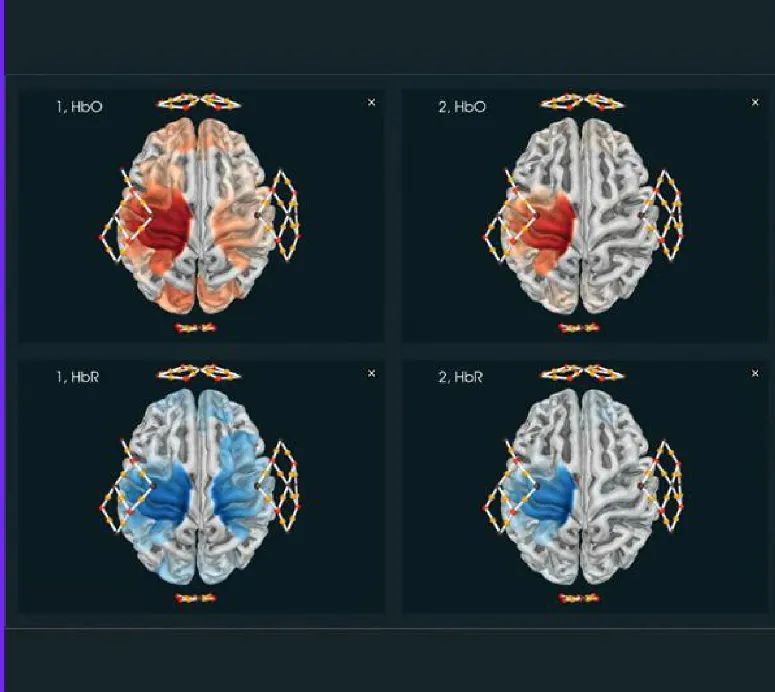


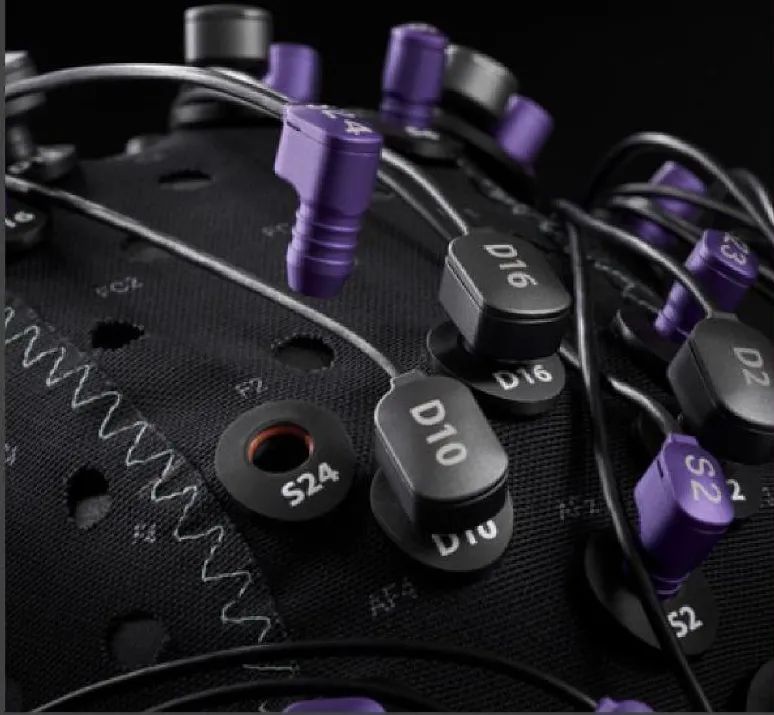


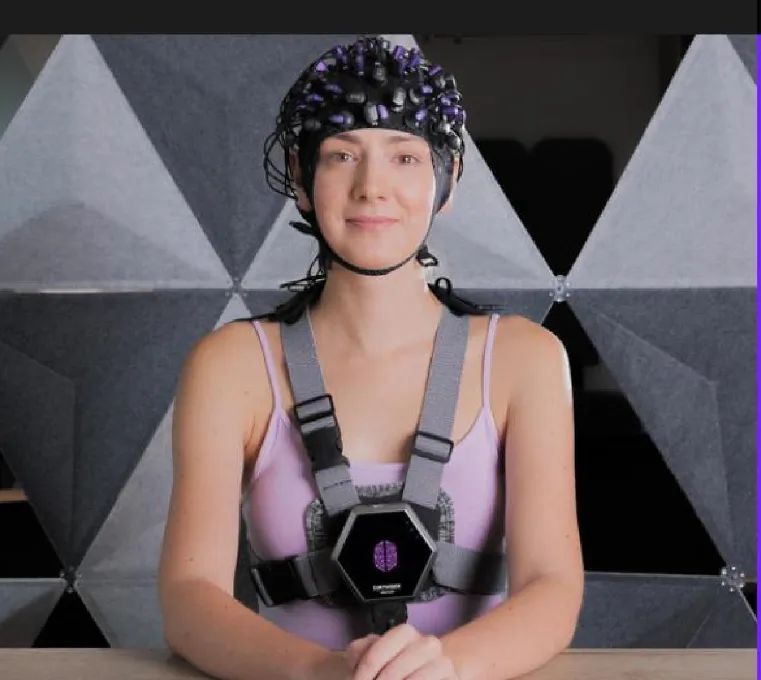


If there is any infringement, please contact us for removal!
Company Profile



Ltd. is an innovative high-tech enterprise focusing on cutting-edge technology, specializing in brain science, neural management, human factors engineering, biomechanics, anthropomorphic environments and XR simulation reality and other multidisciplinary cross-cutting fields. The company is invested by Zhongke (Guangdong) Science Group, relying on the scientific research strength of Guangdong Human Factors Technology Research Institute and Wuhan Human Factors Engineering Technology Research Institute, and has constructed a professional operation system integrating research and development, production, sales and technical service to provide customers with one-stop, high-quality scientific and technological solutions.
With excellent innovation ability, Hengbest Technology has been awarded many invention patents, software copyrights and registered trademarks, selected in many authoritative lists such as National High-tech Enterprises, and participated in the compilation of national standards and group standards. The company has been serving universities and research institutes for a long time, and has cooperated deeply with many national societies such as the Chinese Society of Ergonomics, the Chinese Psychological Society, the Architectural Society of China, etc. The company organizes and participates in more than 40 academic conferences every year to promote technical exchanges and the development of the industry.
With the concept of "Technology Empowerment, Innovation Drive", Hengzhi Technology is committed to become a leading technology enterprise in the industry, to help national scientific and technological progress and social development, and to work together with partners from all walks of life to achieve a better future of technological empowerment.
































